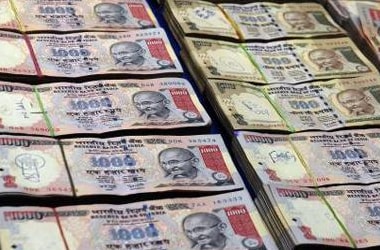
Where will the banned 500 and 1,000 Rupees notes go?
Just in case you were wondering and making anticipations on what will happen to the 23 billion banned notes banned after the big announcement, we bring you facts and figures to reveal the truth. Reserve Bank of India (RBI) will be left with a mammoth task of destroying and recycling notes that will cease to exist after December 30.
Before we go any further into detailed process of how RBI will carry out the big job, here are
a few facts to estimate how big the task is going to be:1. In terms of value, notes of Rs 17.77 lakh crore were in circulation by October 28. Out of these about 83% of India’s currency will have to be scrapped off. This accounts to about 23 billion notes of Rs 500 and Rs 1,000.
2. If these useless notes are stacked one on top of the other its height will be 300 times higher than the Mt Everest.
3. India ranks second amongst the highest producers and consumers of currency notes with China running at the first place. 98% of consumer payments in India are made using cash.
4. Each year RBI spends more than Rs 2,700cr on the production of currency; this accounts to about 1.5% of the global bank note industry.
Every year RBI destroys soiled and mutilated notes. In 2012-2013, they got rid of about 14 billion mutilated notes. It further rose to 16 billion notes destroyed in 2015-2016.
Here’s how the process of destroying notes at RBI is carried out:1. A device called currency verification and processing system (CVPS) was installed in 2003 by the then governor, Bimal Jalan for efficient processing of soiled and mutilated notes.
2. Each of these CVPS is capable of processing, which includes sorting them into good and bad and destroying, up to 60,000 notes in one hour.
3. Destroying is carried out by shredding and briquetting machines. There are 27 of these machines across 19 offices.
4. It was only after 2001 that removed noted were shredded and recycled. Earlier they were simply reduced to ashes.
The good notes are so shredded that they could be recycled and used in the making of new currency notes. The Rs 500 and Rs 1000 notes that are in good condition might be used in the same way.
After the shredding of soiled/mutilated/expires notes:1. After the notes are shredded, they are made into briquettes, balls of compressed shreds that can be used as fuel.
2. RBI sends out tender invites and sells off the briquettes that could be put to industrial use.
3. Some of these shredded notes that are not in a very bad condition are also recycled to make files, calendars, tea coasters and souvenirs.
4. Some of the shreds also get used up at landfill sites.
What other countries do to expired note?1. In cold countries the expired and discarded notes are used in the heating of buildings.
2. Till 1990, England used the notes for heating buildings but now it recycles by compost treatment. The process is said to improve soil quality.
3. US Federal Reserve Bank chips the notes into smaller pieces that are used for artistic purposes or for making of souvenirs.